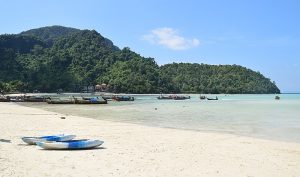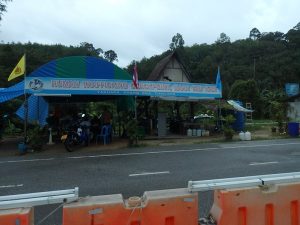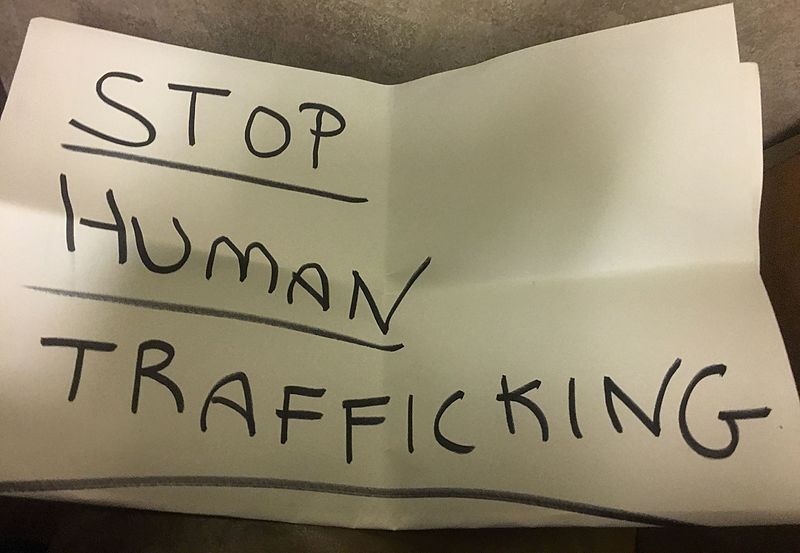Human Trafficking in Thailand
Due to the Covid’19 pandemic, Human Trafficking in Thailand has been at it’s lowest rate in over two decades.
Dannielle Blumenthal, CC BY 2.0
Human Trafficking is a serious problem that is dealt with all over the world. With Thailand ranking number 11 in countries with the highest ranking of Human trafficking.

The country of Thailand is a popular tourist destination. Attracting around 40 million tourists into the country a year (as of 2019). Thailand is known for its beautiful beaches, culture, pad Thai, and smiles. It is one of the most popular places in Asia for people to visit. Thai people are known to be the nicest, most polite, and well-mannered people in Asia. However, many people do not know the things that go on behind a country’s tourism front.
According to the United Nations Office on Drugs and Crime (UNODC) human trafficking is defined as; the recruitment, transportation, transfer, harboring or receipt of people through force, fraud or deception, with the aim of exploiting them for profit. Men, women and children of all ages and from all backgrounds can become victims of this crime, which occurs in every region of the world. The traffickers often use violence or fraudulent employment agencies and fake promises of education and job opportunities to trick and coerce their victims.

Trafficking of women and children into forced prostitution and labor is a significant issue in Thailand. According the the Library of Congress, as of 2007, it was estimated that 200,000-300,00 men, women, and children were involved in prostitution. Thailand has a high rate of prostitution because of the illegal sex tourism industry. Around 30-40,000 prostitutes are under the age of 18 years old. These numbers do not include foreign migrants brought over to be trafficked into forced prostitution or sweatshop labor. The women (Thai and migrants) are trafficked from Thailand to other parts of the world including Japan, United States, Singapore, Malaysia, and Europe. They are trafficked there for more prostitution or sweatshop labor. Men are also trafficked out of Thailand, normally to China or other Asian countries, for sweatshop, fishery, farm, or industrial labor.
The Government of Thailand is increasing their effort to help eliminate human trafficking. In the US Department of State, they are considered tier 2, with not meeting the minimum standards of ACT’s. The government provides anti-trafficking training for judges, and prosecutors. The Thai Government also is working with non-Government organizations (NGO’s) to help provide trauma care training to police, shelter staff, and prosecutors. The government investigates the more suspected cases of labor trafficking, or cases involving minors. In 2008, the Thai government passed an anti-trafficking law, Anti- TIP act, that criminalized sex-trafficking/labor-trafficking. According to the US Department of State, if you were to be found guilty of human trafficking you would be penalized with up to 12-years of imprisonment, and a fine of $400,000- 1.2 million baht for offensives involving adults. However, with offensives involving minors is up to 20 years of imprisonment and a fine from $600,000- 2.0 million baht.

The Thai government has shown uneven progress to protected labored/sex trafficked victims. In 2019, it was reported that there were 868 trafficked victims. Then in 2018, when there were 631 trafficked victims. As well as 950 victims that were identified as “extorted” victims, either transported out or brought in from other countries.
Since the pandemic started in March of 2020, and Thailand went on lockdown human trafficking cases declined. With a total of 131 cases being reported so far this year, reported by Reuters News. For Thailand this a record low in over a decade of human trafficking cases being reported. Having curfews, lockdowns, and business closures helped reduced the possibilities of trafficking. In a way the pandemic helped with the numbers of human trafficking go down, since the country was so strict with their restrictions. Also just starting to allow international to resume in the country.
Since the 1400’s human trafficking has been a big part of the world. It originated in southeast Asia, Eastern Europe, and parts of Africa. Recruiters would look out for migrants through various sources to take these people and sale them as free or cheap labor or sold into prostitution. This has been going on for hundreds of years, with increases and decreases with human trafficking. Human trafficking is not just an issue in Thailand. It is found all over the world, even in Williamsburg, there has been cases of human trafficking reported.




